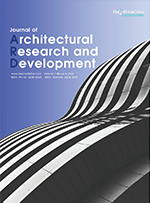Abstract
Green campus design has become an essential strategy to enhance campus life and learning. However, noise pollution remains a troubling aspect that impacts teaching and learning processes, even causing harm to the health of students and teachers. Therefore, acoustic environment quality design is crucial. This article focuses on the expansion project of a school campus in Shenzhen. We simulated and analyzed the outdoor noise environment separately for the proposed teaching building, as well as the existing buildings like the dining hall, teaching building, and laboratory building. The results showed that the proposed teaching building was mainly affected by surrounding noise, with the worst outdoor noise being in classrooms adjacent to the teaching building in the south and the basketball court at the west of the classroom, with maximum noise values reaching 73 dB and 66 dB, respectively. In the future, these rooms should be renovated to achieve an excellent indoor soundproof environment.
References
Huang L, Zhu Y, Ouyang Q, et al., 2012, A Study on the Effects of Thermal, Luminous, and Acoustic Environments on Indoor Environmental Comfort in Offices. Build Environ, 49: 304–309.
Mourshed M, Zhao Y, 2012, Healthcare Providers’ Perception of Design Factors Related to Physical Environments in Hospitals. J Environ Psychol, 32(4): 362–370.
Liu F, Kang J, 2016, A Grounded Theory Approach to the Subjective Understanding of Urban Soundscape in Sheffield. Cities, 50: 28–39.
Schweiker M, Ampatzi E, Andargie MS, et al., 2020, Review of Multi-Domain Approaches to Indoor Environmental Perception and Behaviour. Build Environ, 176: 106804.
Acun V, Yilmazer S, 2018, A Grounded Theory Approach to Investigate the Perceived Soundscape of Open-Plan Offices. Appl Acoust, 131: 28–37.
Acun V, Yilmazer S, 2019, Combining Grounded Theory (GT) and Structural Equation Modelling (SEM) to Analyze Indoor Soundscape in Historical Spaces. Appl Acoust, 155: 515–524.
Medvedev O, Shepherd D, Hautus MJ, 2015, The Restorative Potential of Soundscapes: A Physiological Investigation. Appl Acoust, 96: 20–26.
Chen B, Kang J, 2011, Acoustic Comfort in Shopping Mall Atrium Spaces — A Case Study in Sheffield Meadowhall. Archit Sci Rev, 47(2): 107–114
Meng Q, Zhang S, Kang J, 2017, Effects of Typical Dining Styles on Conversation Behaviours and Acoustic Perception in Restaurants in China. Build Environ, 121: 148–157.
Hubbard P, 1996, Conflicting Interpretations of Architecture: An Empirical Investigation. J. Environ. Psychol, 16: 75–92.
